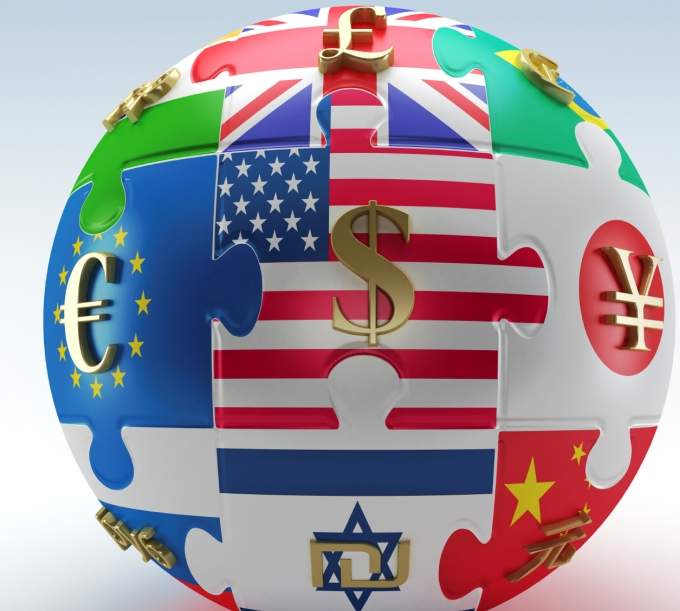
ETFs are becoming increasing popular in the wealth management space and MiFID 2 regulation is also driving awareness about ETFs as a way to invest across asset classes and geographies. Saloni Sardana and Ronan McCaughey explain
The growing popularity of ETFs has been most of the noteworthy trends in wealth management in recent years.

Access deeper industry intelligence
Experience unmatched clarity with a single platform that combines unique data, AI, and human expertise.
ETF assets under management reached $4.84tn worldwide at the end of 2017 – a growth rate of 36.3% over the previous year, according to GlobalData Financial Services.
In comparison, global hedge fund assets grew by only 6.4% in 2017.
Appetite for ETFs is not limited to the retail and institutional segment. Even in 2015 the majority of wealth managers GlobalData surveyed agreed that exchange-traded products (ETPs) were not just for the mass market.
Back in 2015, 10% of the HNW portfolio was allocated to various ETPs, while in 2017 ETFs specifically accounted for 14% of HNW investments.

US Tariffs are shifting - will you react or anticipate?
Don’t let policy changes catch you off guard. Stay proactive with real-time data and expert analysis.
By GlobalDataEquity share
HNW investors allocate the largest share of their equity investments into direct holdings, although taken together equity funds and ETFs constitute a significantly larger proportion.
Equities illustrate the wider trend of the growing popularity of ETFs. In 2015, HNW investors globally allocated 17.9% of their equity holdings to ETFs.
This proportion rose to 19.7% in 2016 and 21.0 % in 2017, suggesting that wealth managers targeting HNW investors need to offer a range of ETF products in addition to more complex private banking products.
At least to some extent the rise in demand can be attributed to the proliferation of automated investment services, which mainly rely on ETFs.
On the one hand, greater uptake of robo-advice has contributed to higher allocation to passive investments as part of such mandates, while on the other hand it has resulted in greater awareness of the benefits these offer, stimulating overall demand.
Mark Trousdale, EVP at InvestCloud, says: “The importance [of the low costs of ETFs] has been a massive [reason for the popularity among wealth managers. It is no accident that Vanguard has seen incredible growth in gross and net inflows over time.
“While there are key differences between Vanguard’s original innovation – the Traditional Index Fund (or TIF), first created in 1976 – and ETFs, both offer significantly lower cost, higher transparency investment options.”
Trousedale says $1.1trn flowed out of actively managed US equity mutual funds between 2007 and 2016, and during the same period $1.2 trn flowed into indexed US equity mutual funds.
Growth
Similarly, the ETF market between 2009 and 2016 went from $785bn AUM to $2.510 trn – an annualized growth rate of 18.3% – overtaking traditional index funds’ AUM of $2.484 trn.
Trousedale, says: So the movement of money to ETFs is massive, and the preference is favouring ETFs over other passive investing choices.”
Collin Mackenzie, director of investment management at Arbuthnot Latham, says ETFs are the prime mover of downward pressure on the costs of delivering tailored and suitable outcomes for private banking clients
Mackenzie comments: “ETFs can be useful in obtaining exposure to a growing range of investable assets in a cost effective manner and as such are a valuable part of a wealth manager’s toolkit.
“Their popularity is driven by investors seeking diversification at low cost, but as with most investments they are not immune to risk.
But Mackenzie warns: “Though they offer passive access to markets, a portfolio of ETFs must still be actively managed. Investors are still exposed to market risk and the greater the proportion of the market that is owned via such passive strategies, the more the risk can actually increase when investors head for the exit.
He continues: “The fees, while relatively smaller than for active funds, can still mount up in addition to management expenses and trading costs, investors must also consider income and capital gains taxes.
Christine Cantrell, UK ETF intermediary sales director at BMO Global Asset Management, says “The competitive nature” of ETFs help private bankers to put pressure on active managers to deliver a value-add over and above the relevant index.
The rise of factor based ETFs (tracking indices which are constructed using a methodology to capture certain factors or styles of investing) has provided an additional and unbiased way to appraise an active manager with similar objectives, explains Cantrell.
Cantrell adds: “Lastly, as private bankers narrow down the list of active managers they employ, and complement them with ETFs, overall this should reduce the time and resources spent meeting managers, freeing up capacity for other research or client work.”
James Alexander, senior manager for wealth and asset management at Accenture, says: “Wealth managers use ETFs in a number of ways, predominantly to offer a low-cost way of achieving index exposure to either broad market indices or thematic indices. This can be as part of a long term core asset allocation or for more tactical exposures.”
MiFID 2
The implementation of MiFID 2- an EU directive that came into force in January 2018, has boosted the demand and performance of ETFs, according to PBI’s research.
MiFID 2 aims to provide greater investor protection and transparency on fees.
Stephen Cohen, head of iShares EMEA at BlackRock, says: “At a time when people are becoming more cost sensitive, MiFID 2 is accelerating change by fundamentally upheaving the business of managing wealth.
“It is accelerating fee-based wealth advisory models, where the advisor is paid by the investor and not the product, which opens up the advisory market to using ETFs as an efficient investment tool to deliver client outcomes.”
Cohen adds: “Now that ETF trades are required to be reported, Euronext estimate the annual visible trading volume this year is $2.3trn, versus $1.3trn last year. Between January and June this year, on average 61% more trading on the iShares UCITs range was visible – where it would not have been before MiFID came into force – and for fixed income this jumps to 74%.”
Cohen continues: “We may only be six months in but MiFID 2 is driving awareness about ETFs as a way to invest across asset classes and geographies by shining a light on costs, and mandating trade reporting. This will drive the next phase of growth in the European ETF industry.”
Andreas Zingg, head of ETF distribution at Vanguard agrees. “I think MiFID 2 is having a long-term positive impact. Now when a fund manager recommends a new product, they need to provide full cost transparency. Now clients can see how expensive it. The financial industry is one where cost transparency has been very low.”
Sector ETF investing popularity
Research conducted by Street Global Advisors’ (SSGA) ETF arm, SPDR, in Q4 2017 with over 50 UK wealth managers found that over half (53%) use sector ETF investment strategies, with one in five saying they are using them more today than they were 12 months ago and 44% expecting sector ETFs to be used more over the next 12 months.
When choosing a sector ETF, 40% of wealth managers interviewed cited liquidity as the most important selection criterion.
A total of 31% cited the financial strength of the provider as the most pivotal factor, with an equal quantity stating that the total expense ratio (TER) of the ETF as the key consideration and 6% describing the longevity of the ETF as ‘most important’ input to their buying decision.
Wealth managers cited healthcare as the most attractive sector, selected by 47% of investors. This was followed by technology (43%), energy and utilities (both scoring 35%).
Among those wealth managers who are already using sector investment strategies, two in five (41%) say that they do so because, compared to other investment styles, discrete sector exposures offer a wider dispersion of returns.
Liquidity Crisis
In spite of the popularity of ETFs and their benefits, experts are divided on how they behave in a liquidity or financial crisis.
Mackenzie comments: “ETFs can be extremely sensitive to counterparty risk – synthetic replication ETFs track their relevant index via swaps and their risk is the swaps counterparty fails to deliver.
Mackenzie continues: “ETFs have proven very popular with many retail investors who have been attracted by the promise of index returns at a low cost.
Zingg says: When we discuss liquidity of an ETF, the ultimate liquidity of an ETF depends on the underlying market.”
Zingg adds: “It is crucial that ETFs are more liquid than the underlying asset it is based on. in the worst case you end up with the liquidity of the underlying market. You have the responsibility of an ETF provider to make sure you only take exposures to the market that are liquid and deep enough.”
“However, the “herding” effect this can have exacerbates both the upside and downside moves in the asset markets they participate in.”
Cantrell says: “Some asset classes, which are for example illiquid, non-uniform or perishable are quite difficult if not impossible to replicate in an ETF (or even in a non-UCITS Exchange Traded Product). Direct property and some commodities come to mind. Similarly, some strategies have yet to be seen as practical in ETF form, such as opaque absolute return style investment approaches.
But Cantrell reassures: “In stressed market conditions, ETFs can be very useful for a range of reasons. If the ability to quickly liquidate portfolio holdings is a priority then ETFs allow you to do so, even if asset prices are falling or if certain holdings within the portfolio are traded less often, such as bonds.”
ETFs are certainly opening up wealth management due their low costs and flexible nature opening.
As investors become more cost-conscious, and with competition provided by robo-advisors on the passive front, this is a trend wealth managers cannot afford to ignore.







